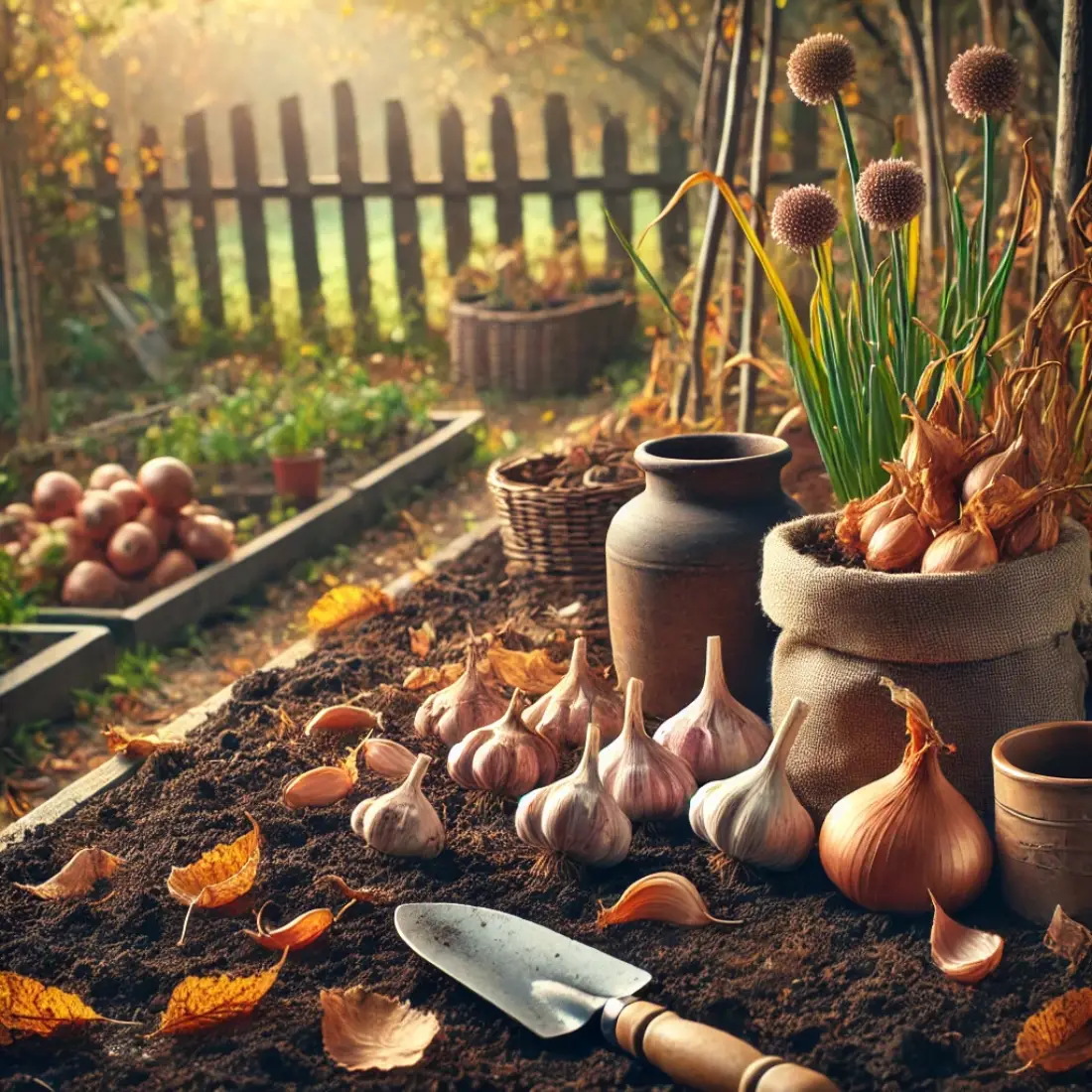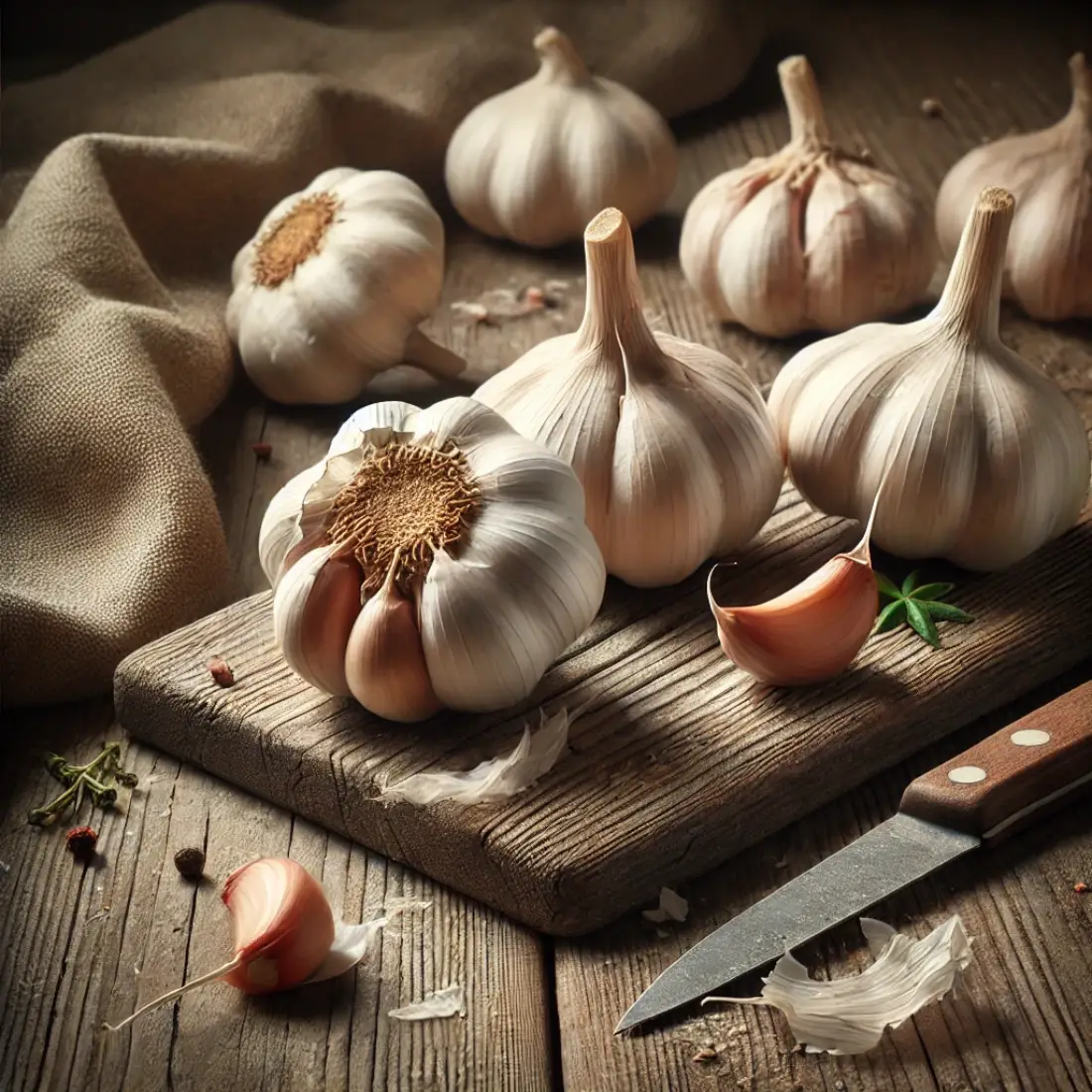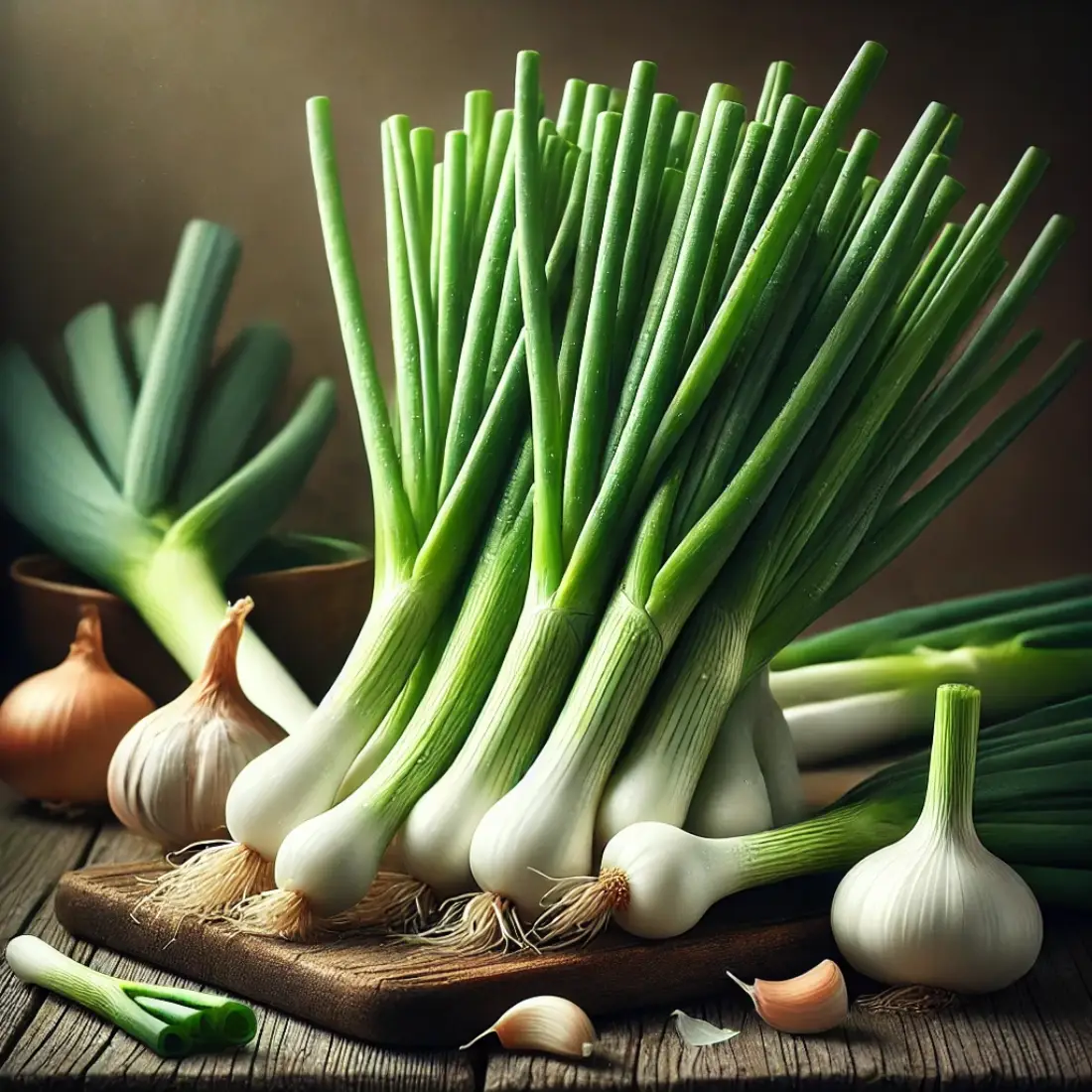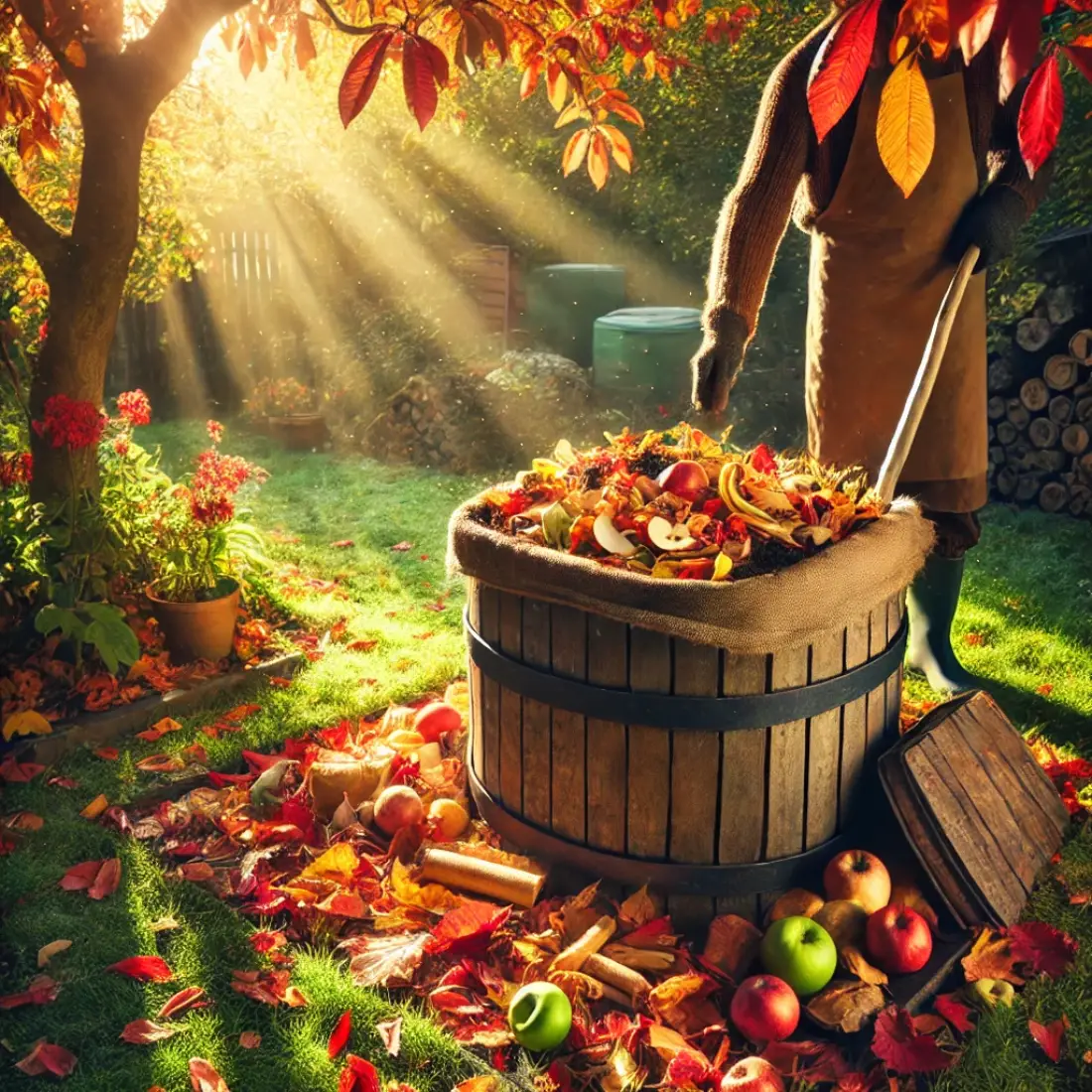Planting garlic and onions in autumn offers numerous benefits for organic gardeners. These resilient crops thrive in cooler temperatures, giving them the chance to establish strong roots before winter sets in. By using organic soil preparation, planting, and care techniques, you can enjoy a rich and bountiful garlic and onion harvest in the next season.
Garlic and onions are staples in many cuisines, and growing them organically boosts both their health benefits and their flavor. This guide covers everything you need to know about planting garlic and onions organically for a successful autumn crop.
Why Plant Garlic and Onions in Autumn?
Autumn is the optimal time for planting garlic and onions. Cool weather allows for strong root development, which helps these crops survive the winter. The cooler temperatures also trigger the natural splitting of garlic bulbs into cloves, essential for future growth.
By planting in autumn, you’ll enjoy earlier and more robust harvests the following year, resulting in larger, more flavorful crops. This is why organic gardeners favor autumn planting for these essential ingredients.
Organic Soil Preparation for Garlic and Onion Planting
Healthy soil is the foundation for successful garlic and onion crops. Start by improving your soil using organic techniques to ensure it has the proper texture and pH level. Garlic and onions prefer loamy, well-drained soil rich in organic matter.
- Test Soil pH: Garlic thrives in slightly acidic to neutral soil with a pH of 6.0 to 7.5, while onions prefer soil with a pH of 6.0 to 7.0.
- Enrich the Soil: Incorporate compost or well-rotted manure to provide essential nutrients and improve soil structure. Avoid synthetic fertilizers, which harm beneficial soil organisms. Instead, use organic amendments like compost, bone meal, or blood meal to naturally boost nitrogen levels.
Choosing the Right Garlic and Onion Varieties
Selecting the right garlic and onion varieties is crucial for a successful autumn crop.
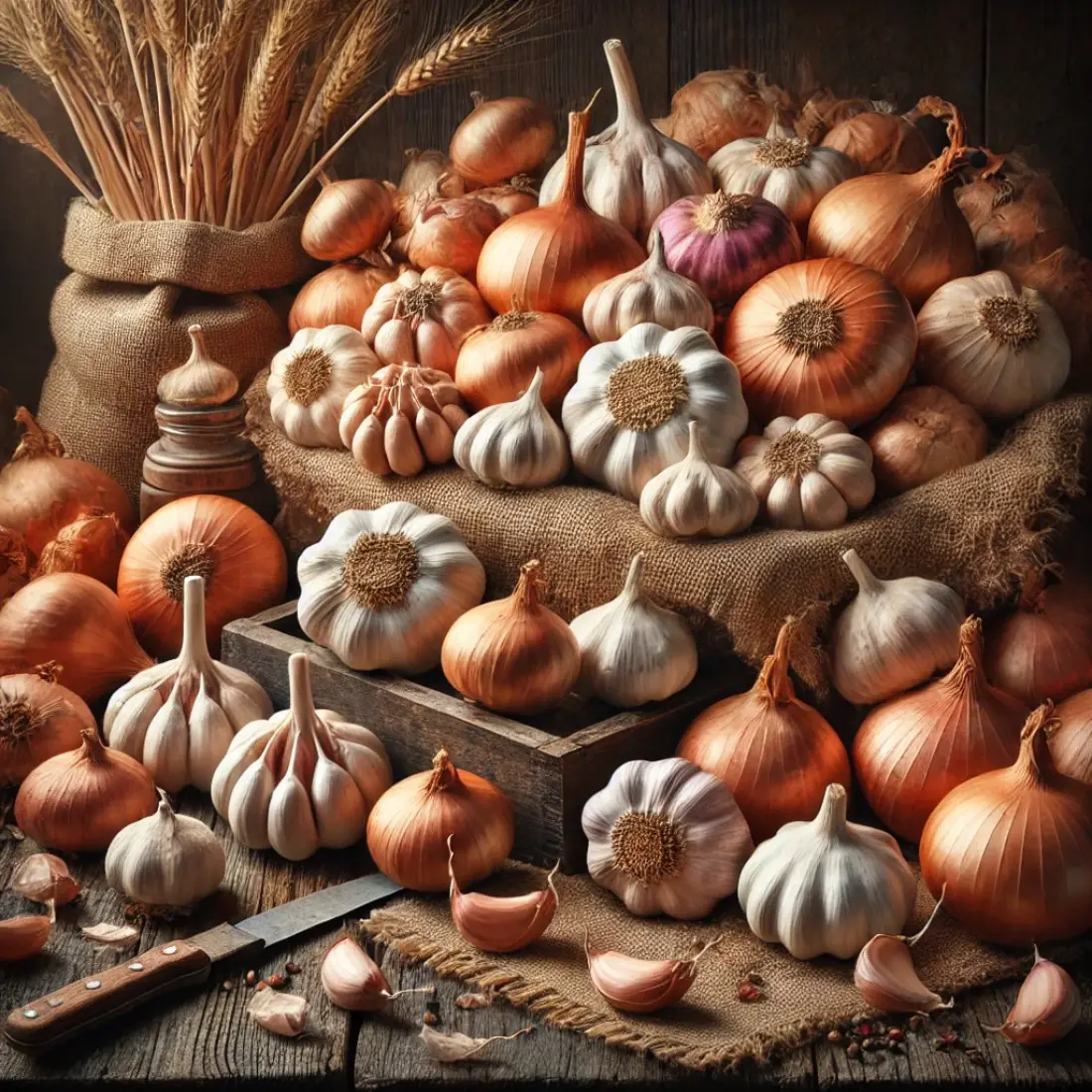
- Garlic Varieties: Hardneck garlic, known for its rich flavor, thrives in colder climates. Softneck garlic, with a milder flavor, is ideal for regions with milder winters.
- Onion Varieties: Choose between long-day, short-day, or intermediate-day onions depending on your region. Long-day onions need more daylight and are suited to northern climates, while short-day varieties work best in southern regions.
For organic gardening, heirloom garlic and onion varieties are an excellent choice as they are often more disease-resistant and flavorful.
Step-by-Step Organic Bed Preparation
To prepare an ideal growing bed for garlic and onions:
- Raised Beds vs. In-Ground: Raised beds are preferred for garlic and onions as they provide better drainage and easier enrichment with organic matter.
- Soil Tilling: Till the soil gently to a depth of 6-8 inches. Alternatively, use a no-till method by adding a thick layer of organic compost directly on the soil surface.
- Mulching: Apply a layer of organic mulch (straw, leaves, or grass clippings) to help retain moisture, protect the soil from erosion, and regulate temperature.
Planting Garlic and Onions: A Detailed Guide
How to Plant Garlic
- Separate Bulbs: Break garlic bulbs into individual cloves. Select the largest cloves for planting.
- Planting Depth and Spacing: Plant cloves root-side down, about 2-3 inches deep, with 4-6 inches between them. This spacing allows for proper bulb development.
- Mulching: Cover the planting area with mulch to retain moisture, suppress weeds, and protect the bulbs during the winter.
By spring, your garlic will be well-established and ready for rapid growth.
How to Plant Onion Sets and Seeds
- Onion Sets: Plant onion sets about 1 inch deep and 6 inches apart in rows.
- Onion Seeds: Sow onion seeds shallowly, no deeper than 1/2 inch.
- Mulching and Watering: Mulch to conserve moisture and insulate the soil. Keep the soil consistently moist, but not waterlogged, to encourage early growth.
Organic Companion Planting with Garlic and Onions
Companion planting garlic and onions with other crops has multiple organic benefits. These plants naturally repel pests like aphids, slugs, and beetles, protecting nearby plants such as carrots, beets, and lettuce. Avoid planting garlic and onions near peas or beans, as they can inhibit each other’s growth.
Incorporating companion plants boosts biodiversity, reduces the need for chemical pesticides, and promotes a healthier, more productive organic garden.
Caring for Garlic and Onions: Watering, Fertilizing, and Mulching
- Watering: Water your garlic and onions deeply but avoid overwatering to prevent root rot. Consistent moisture is critical, especially during early growth stages.
- Organic Fertilizers: Use fish emulsion, blood meal, or bone meal to feed your crops. These organic fertilizers release nutrients slowly, providing steady nourishment throughout the growing season.
- Mulching: Mulch garlic and onions with organic materials like straw or shredded leaves. Mulch controls weeds, regulates soil temperature, and conserves moisture.
Conclusion: Enjoy a Thriving Autumn Crop of Garlic and Onions
By following these organic planting techniques for garlic and onions, you can enjoy a bountiful, healthy crop next season. Focus on preparing nutrient-rich soil, planting at the right time, and utilizing organic companion planting to maximize your garden’s productivity. Not only will you support sustainable gardening, but you’ll also grow fresher, more flavorful produce.
FAQs About Planting Garlic and Onions
When is the Best Time to Plant Garlic and Onions in Autumn?
Plant garlic and onions between late September and early November, depending on your climate. Aim to plant before the ground freezes, but after the hottest summer days.
How Long Does Garlic and Onion Take to Grow?
Garlic requires about 9 months to grow, with autumn planting and a summer harvest. Onions typically take 6-8 months, depending on the variety.
Can Garlic and Onions Be Planted Together?
Yes, garlic and onions can be planted together, provided they have enough space between them to avoid nutrient competition.
Can Garlic and Onions Be Planted in Containers?
Yes, you can plant garlic and onions in containers that are at least 8-10 inches deep. Ensure the containers have good drainage and are filled with high-quality organic potting soil mixed with compost.
Should I Fertilize Garlic and Onions After Planting?
Yes, fertilize with organic options like compost tea, fish emulsion, or balanced organic fertilizers. Apply fertilizer in early spring to promote strong growth.

